Versions Compared
Key
- This line was added.
- This line was removed.
- Formatting was changed.
...
...
...
...
...
...
...
...
...
...
...
...
...
...
...
...
...
...
...
...
...
...
...
...
...
...
...
...
...
...
...
...
...
...
...
...
...
...
...
...
...
...
...
...
...
Asset Types are special categories of resources that are not automatically provisioned through provisioning policies, but must always be requested. Asset Types can be calls to EmpowerID DLLs or other custom .NET assemblies that provision or deprovision actual resources that exist in the Resource table of the EmpowerID Identity Warehouse, like shared folders, user accounts, and Exchange mailboxes or they can be simple creations of objects (generic assets) added to the Identity Warehouse for tracking purposes only, such as a mobile phone or a company laptop.
This topic demonstrates how to create Asset Types in EmpowerID.
To create a generic asset type
- In the
...
- navigation sidebar, expand Object Administration and click Assets.
- From the Find Assets page, click the Actions tab and then click the Create Asset Type tile.
...
 Image Added
Image Added- In the New Asset Type form that appears, enter a name and description for the asset type in the Display Name, Name and Description fields.
Select Generic Asset from the Resource Type drop-down and click Submit.
Tip For immediate processing, leave Wait to See Results selected. If you clear Wait to See Results and click Submit, the process idles and EmpowerID creates a task for it, routing it to any Person with the delegations to continue moving the people.
...
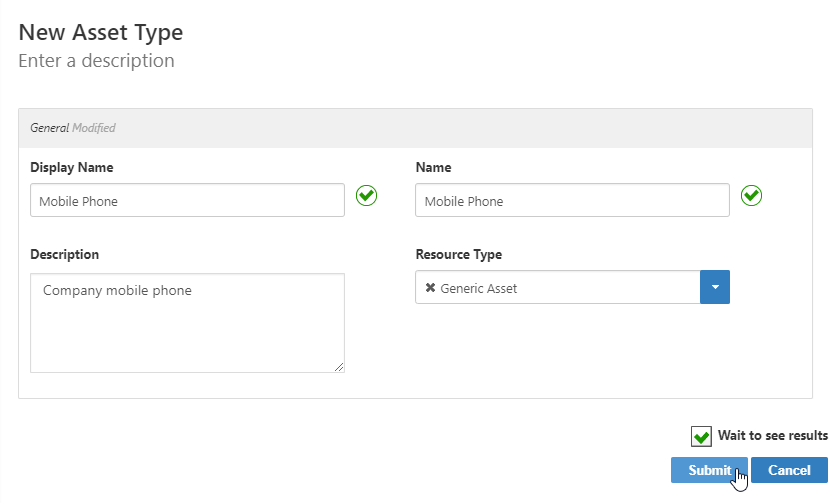 Image Added
Image AddedFrom the grid of the Select Resource System screen that appears, click the Generic Asset System item to select it and click Submit.
...
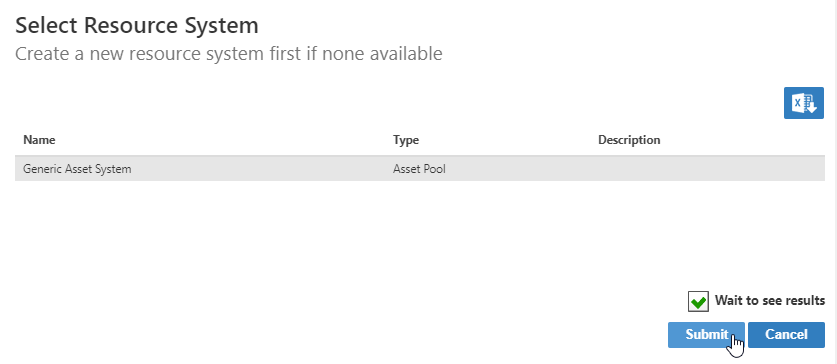 Image Added
Image Added- Click OK to close the Operation Execution Summary.
To create an Asset Type for an AD User Account
| Info | ||
|---|---|---|
| ||
EmpowerID must be connected to Active Directory. This creates the necessary security boundary around the asset type. For step-by-step instructions, see Connecting to Active Directory. |
- In the
...
- navigation sidebar, expand Object Administration and click Assets.
- From the Find Assets page, click the Actions tab and click the Create Asset Type tile.
- In the New Asset Type form that appears, enter a name and description for the asset type in the Display Name, Name and Description fields.
...
 Image Added
Image AddedSelect User Account from the Resource Type drop-down and click Submit.
Tip For immediate processing, leave Wait to See Results selected. If you clear Wait to See Results and click Submit, the process idles and EmpowerID creates a task for it, routing it to any Person with the delegations to continue moving the people.
...
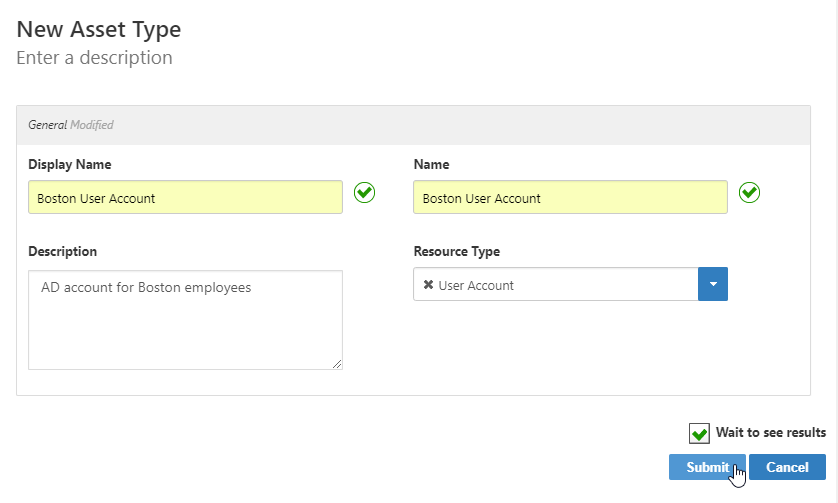 Image Added
Image Added- In the Select Account Store lookup that appears, search for your Active Directory account store.
- From the grid, click the record returned for the account store to select it and click Submit.
...
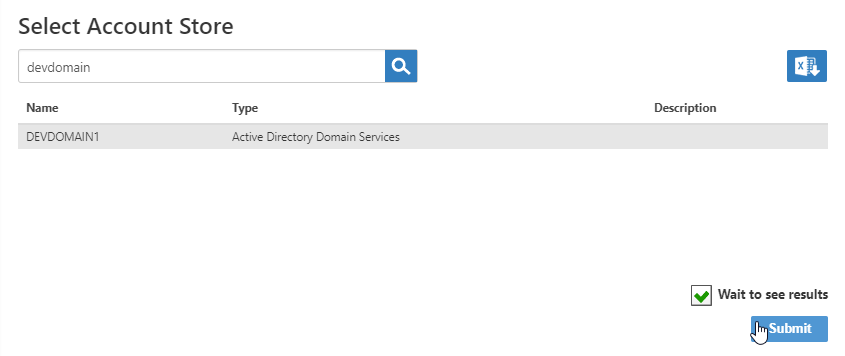 Image Added
Image Added- In the Select a creation location lookup that appears, search for the OU in which you want the AD user accounts to be created, click the node for that location in the tree-view and then click Submit.
 Image Modified
Image Modified - In the Asset Configuration form that appears, select user from the ObjectClass drop-down, type the LDAP path to the OU you selected above and click Submit.
...
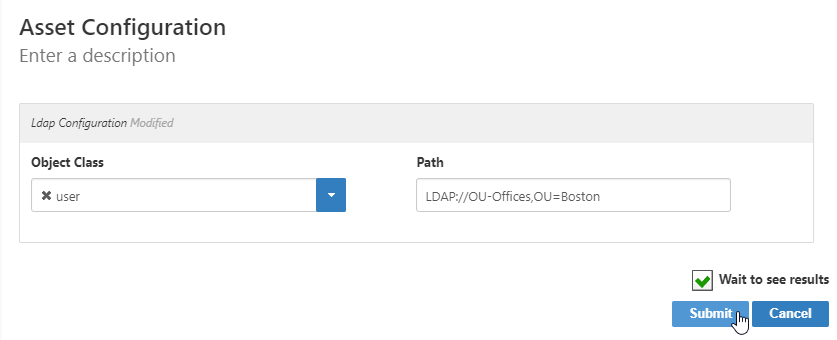 Image Added
Image Added- Click OK to close the Operation Execution Summary.
To create an Asset Type for an Exchange Mailbox
| Info | ||
|---|---|---|
| ||
Connect EmpowerID to an Active Directory that has an Exchange Organization. Doing so creates the necessary security boundary for the asset type. For step-by-step instructions, see Connecting to Active Directory. |
- In the
...
- navigation sidebar, expand Object Administration and click Assets.
- From the Find Assets page, click the Actions tab and then click the Create Asset Type tile.
...
 Image Added
Image Added- In the New Asset Type form that appears, enter a name and description for the asset type in the Display Name, Name and Description fields.
Select Exchange Mailbox from the Resource Type drop-down and click Submit.
Tip For immediate processing, leave Wait to See Results selected. If you clear Wait to See Results and click Submit, the process idles and EmpowerID creates a task for it, routing it to any Person with the delegations to continue moving the people.
...
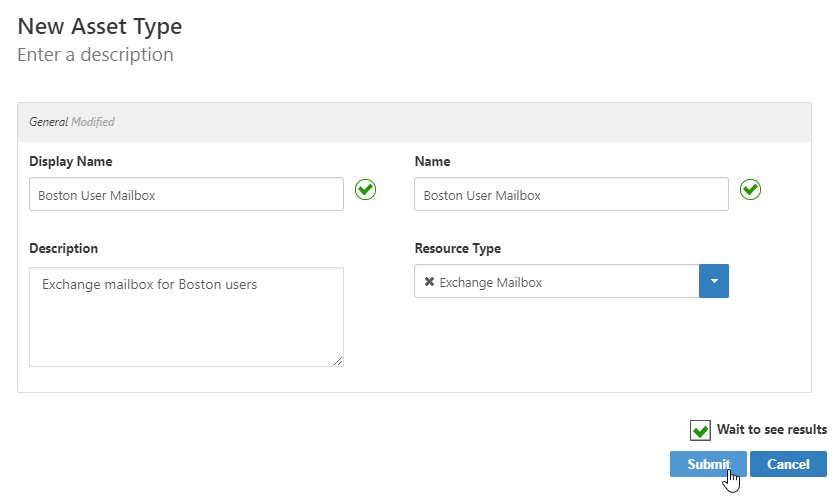 Image Added
Image Added- In the Select Resource System lookup that appears, click the record for the appropriate Exchange organization to select it and click Submit.
...
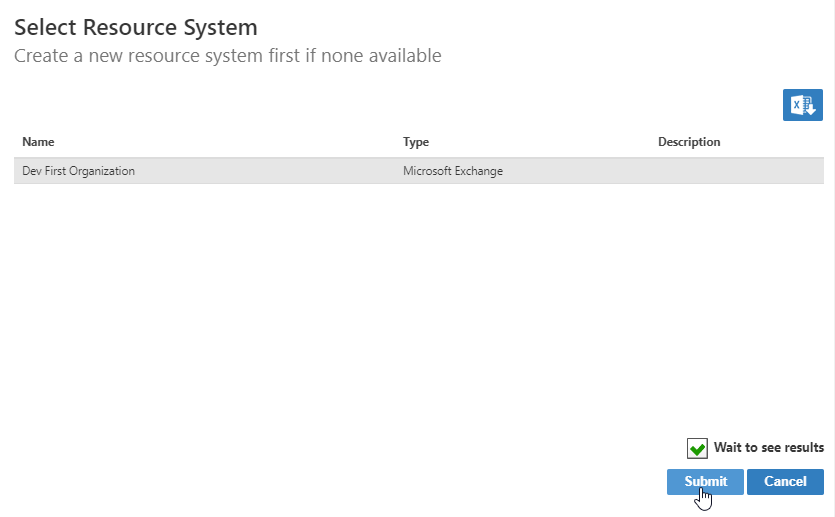 Image Added
Image Added- In the Asset Configuration screen that appears, do the following:
- Select the domain in which the user must have an account from the Depends on having account in the domain drop-down. Users must have an Active Directory account to receive an Exchange Mailbox asset.
- Select the appropriate Active Directory asset type from the Provision this asset if missing dependency drop-down. If the user does not have an AD account, EmpowerID provisions one of the specified asset type. You must create an Asset Type Request for an AD user account before any values appear in this drop-down.
- Click Submit.
...
 Image Added
Image Added
- Click OK to close the Operation Execution Summary.
To create an Asset Type for a home folder
| Info | ||
|---|---|---|
| ||
Connect EmpowerID to your Active Directory and add a resource system for a Windows Server resource type to EmpowerID. For step-by-step instructions, see Connecting to Active Directory and Adding File Servers. You must have at least one shared folder on the server, because newly created shared folder assets are placed in the selected parent folder. |
- In the Navigation Sidebar, expand Resources and click Assets.
- From the Assets management page, click the Actions tab and then click the Create Asset Type tile.
...
 Image Added
Image Added- In the New Asset Type form that appears, enter a name and description for the asset in the Display Name, Name and Description fields.
Select Shared Folder from the Resource Type drop-down and click Submit.
Tip For immediate processing, leave Wait to See Results selected. If you clear Wait to See Results and click Submit, the process idles and EmpowerID creates a task for it, routing it to any Person with the delegations to continue moving the people.
...
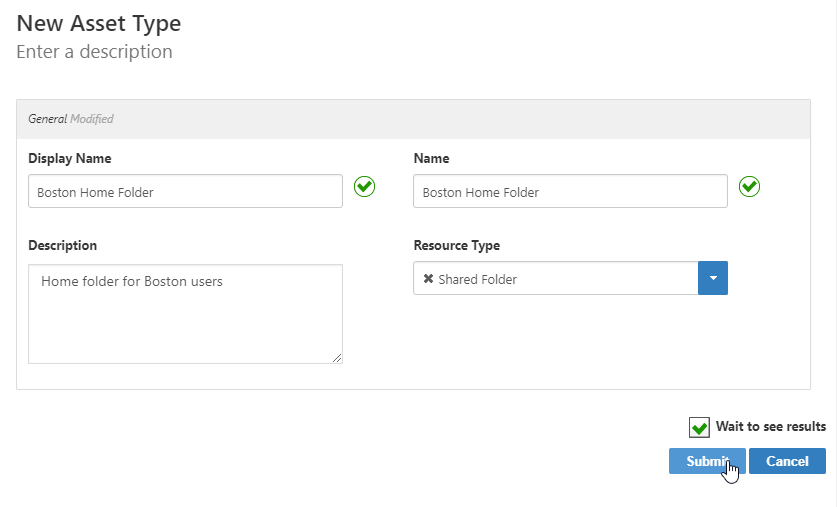 Image Added
Image AddedFrom the grid of the Select Resource System screen that appears, click the Windows Server resource system item to select it and then click Submit.
Info You
...
must add a resource system for Windows Server to EmpowerID for it to appear in the grid.
...
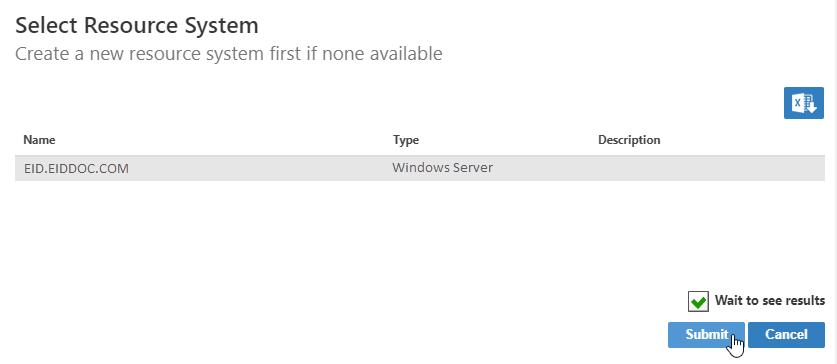 Image Added
Image Added- In the Asset Configuration form that appears, do the following:
- Click Create as Share and then click Create as Share again if the folder is a shared folder.
- Select Hide Share if the folder is a shared folder that you want to hide on the File server.
- Select the drive letter for the Shared folder from the Map to Drive drop-down. EmpowerID writes this value to the user's AD account.
- Select the AD account store in which the shared folders are to be created from the Depends on having account in the domain drop-down.
- Select the prerequisite AD asset type from the Provision this asset if missing dependency drop-down. As users must have an AD user account before they can have a home folder, EmpowerID will provision a user account if the user does not yet have one.
...
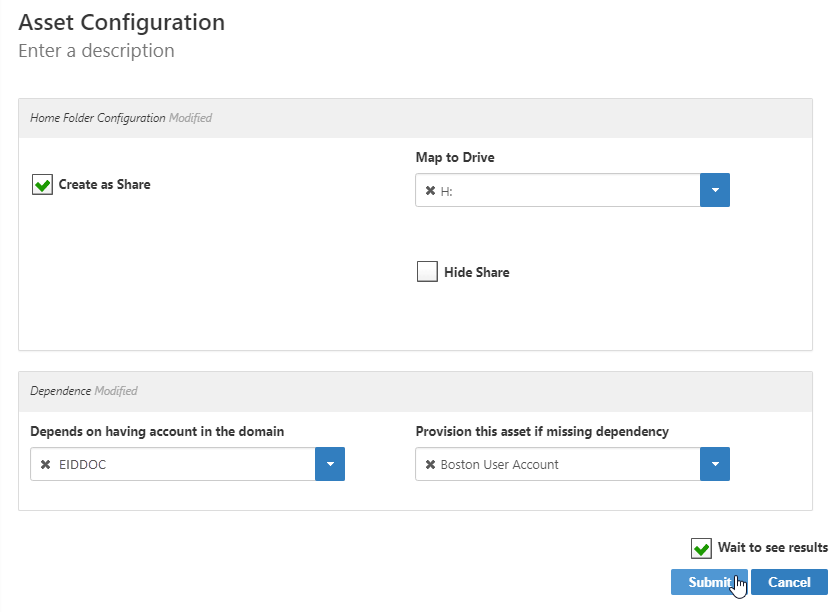 Image Added
Image Added
- In the Shared Folder lookup that appears, search for the parent shared folder in which to create home folders, click that folder in the grid to select it, and then click Submit.
...
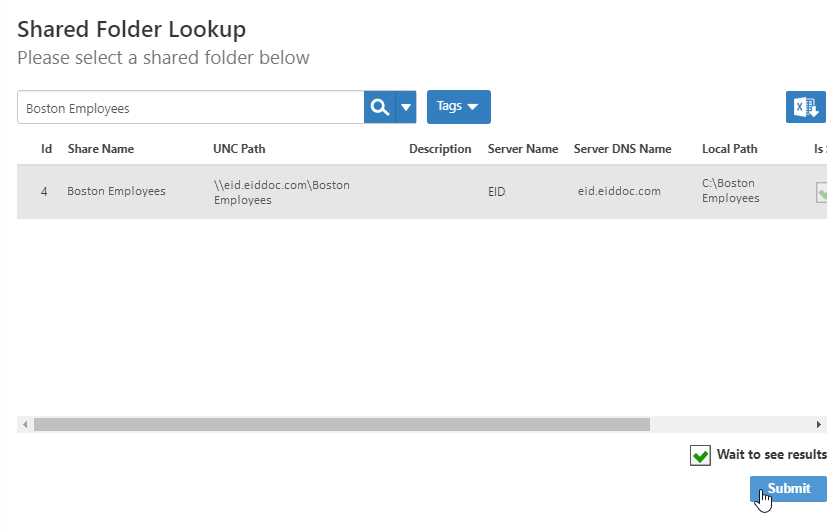 Image Added
Image Added- Click OK to close the Operation Execution Summary.
| Div | ||||||||||||||||||||||
|---|---|---|---|---|---|---|---|---|---|---|---|---|---|---|---|---|---|---|---|---|---|---|
| ||||||||||||||||||||||
|